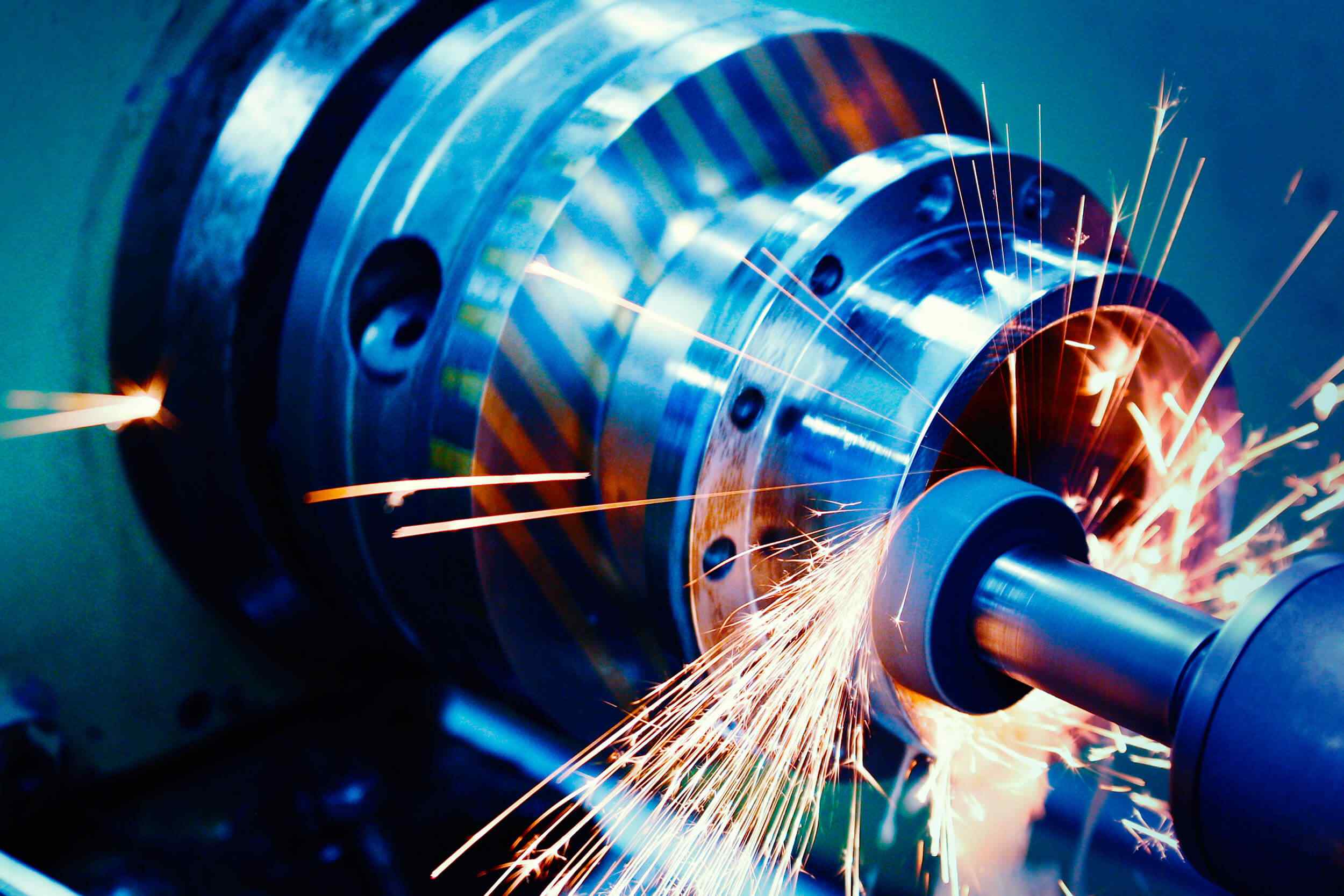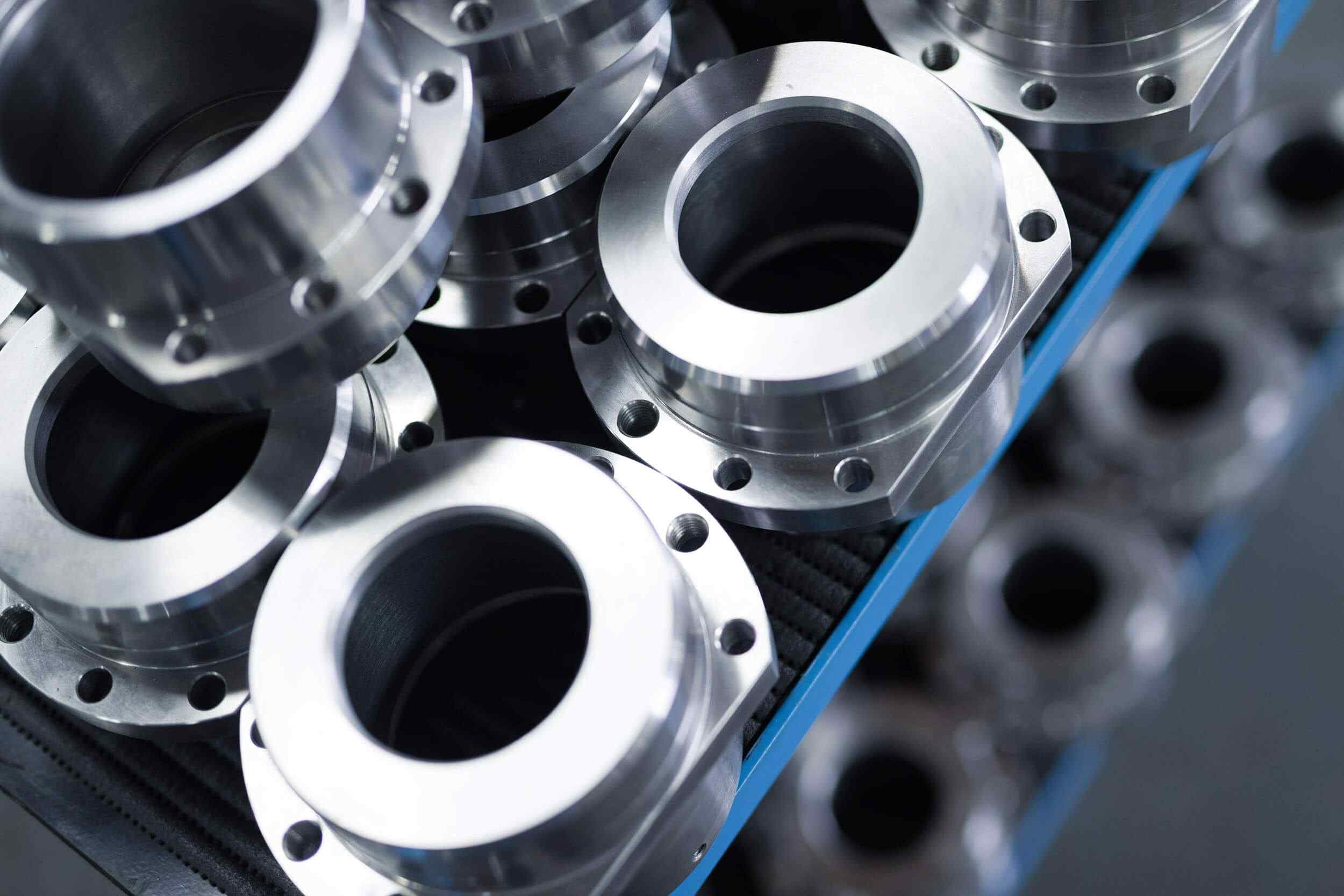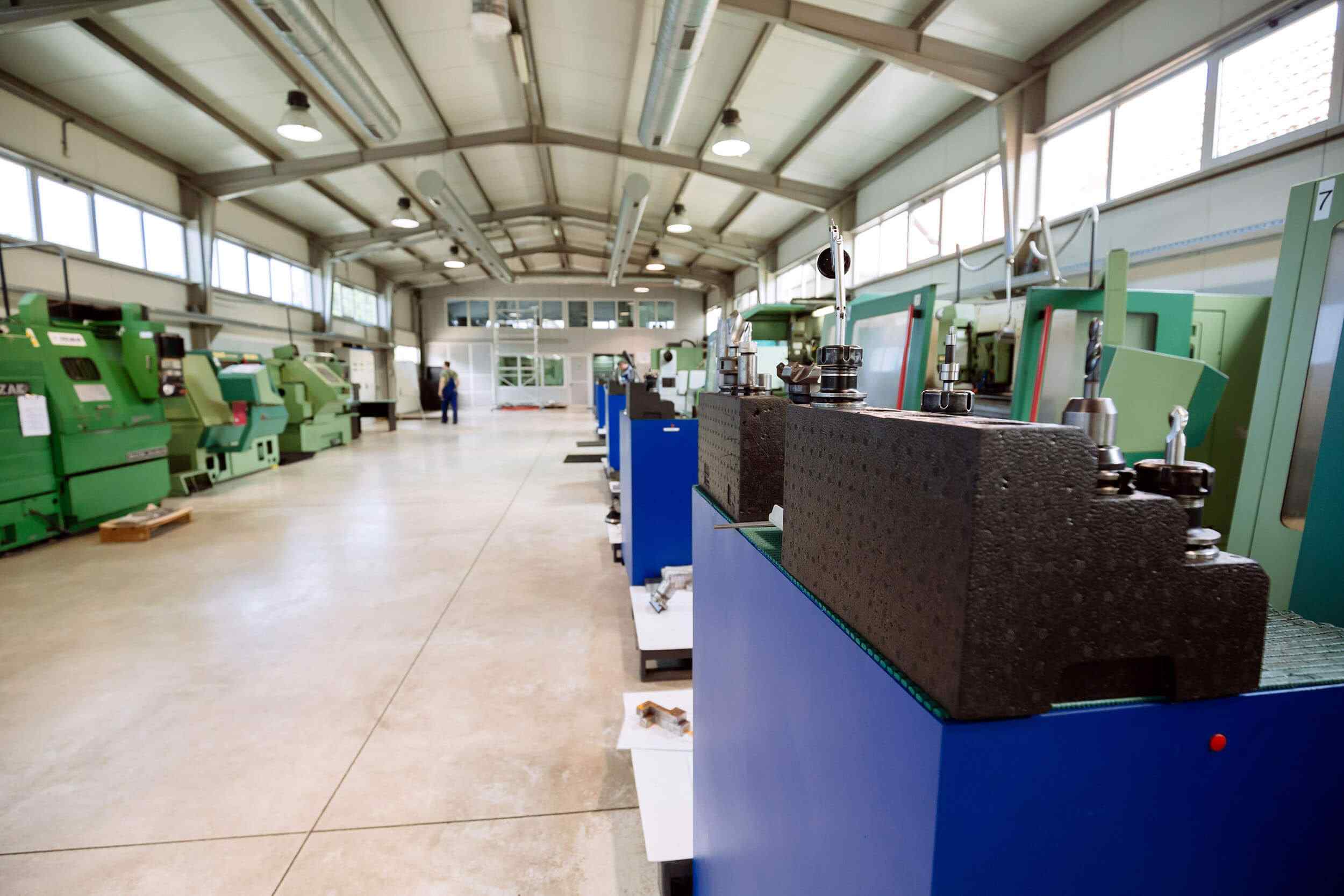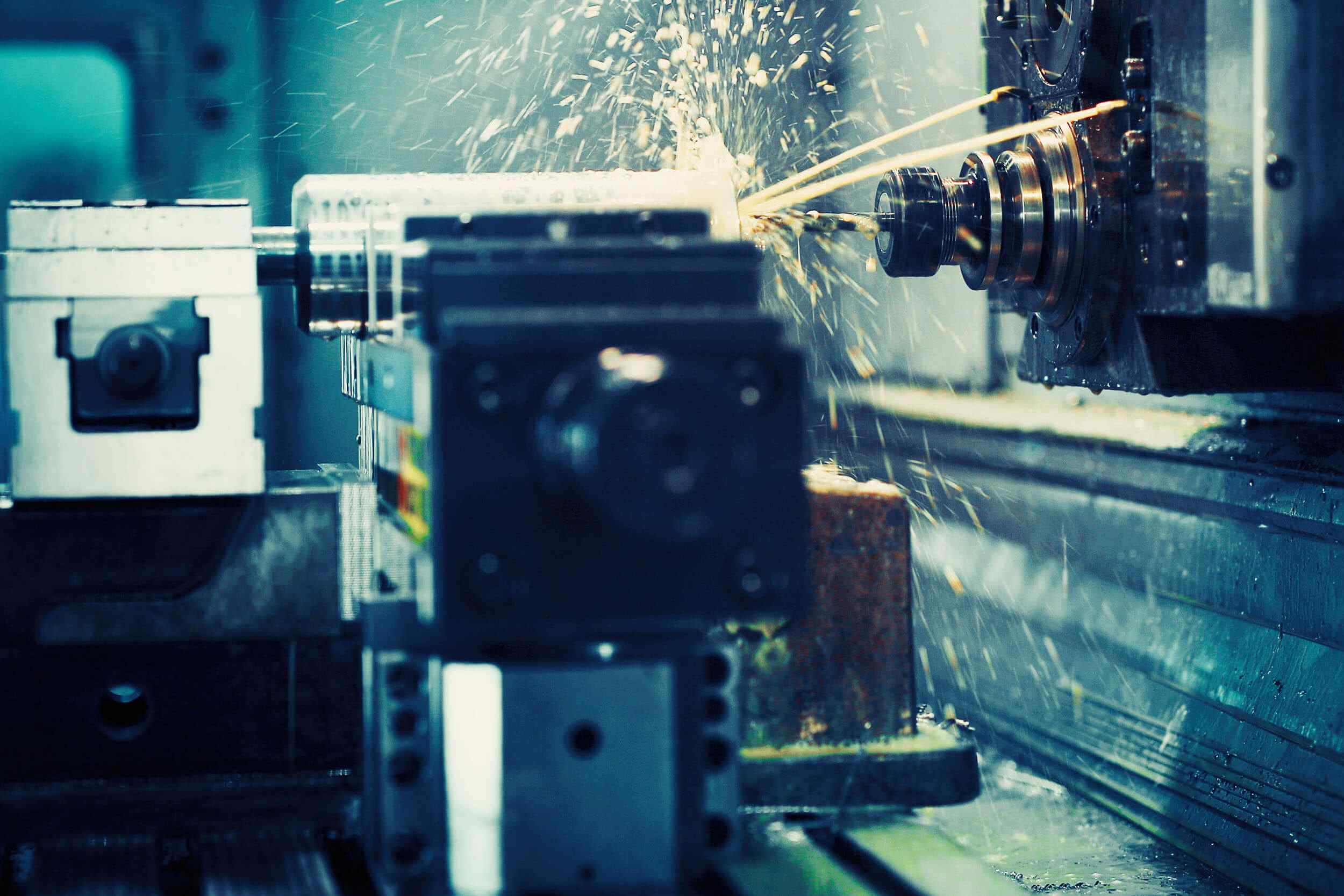CNC Machining
CNC machining is the most common subtractive manufacturing technology today and a hugely flexible and robust way to produce custom metal and plastic parts. Using CAD models, CNC machines precisely remove material from a solid block with a variety of cutting tools.
Overall, CNC machining produces parts with tight tolerances and impressive material properties. It’s suitable for single jobs and low-to-medium volume production (up to 1,000 parts), due to its high repeatability.
CNC milling
CNC milling uses rotational cutting tools to remove material from a workpiece to produce finished parts and products. This manufacturing process works well for many materials, including metals, polymers, wood and glass. CNC milling systems generally have 3 linear degrees of freedom: the X, Y and Z axis. This allows for top-notch precision and detailing. Merit also offers more advanced, 5-degree systems, where the tool head and machining bed (A and B axis) can also rotate. 5-axis CNC machines can produce parts with high geometric complexity without needing multiple machine setups.
CNC turning
CNC turning machines use stationary cutting tools to remove material from a part, which is mounted on a rotating chuck. This is an ideal way to manufacture parts with symmetry along their center axis. Turned parts are typically produced faster and at a lower cost than milled parts.
Typically, CNC turning systems—also known as lathes—are used to create cylindrical parts. Modern multi-axis CNC turning centers, equipped with CNC milling tools, can manufacture non-cylindrical parts. These systems combine the high productivity of CNC turning with the capabilities of CNC milling and can manufacture a very large range of geometries with rotational symmetry, such as camshafts and radial compressor impellers.
